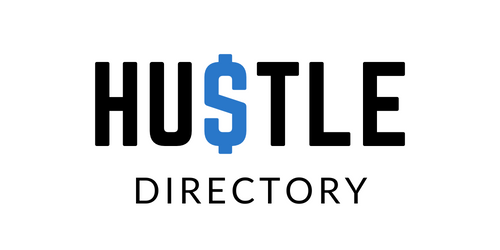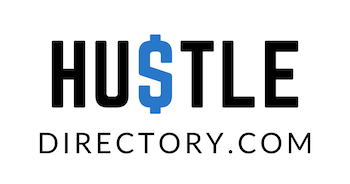As interest rates continue to rise in the United States, many people are seeking alternative investment opportunities to stay competitive and maximize returns. If you’ve been exploring these options, you might have stumbled upon the term “peer-to-peer lending” (P2P lending) and wondered what it is all about. But, what is peer-to-peer lending?
In recent years, P2P lending has emerged as an innovative form of financing, disrupting traditional lending practices and offering an attractive alternative to banks and other financial institutions.
In this article, we’ll provide an in-depth look at what is a peer-to-peer loan, how peer-to-peer lending works, why people choose to borrow and lend money through P2P platforms, and showcase some popular lending platforms in the United States.
We’ll offer actionable tips, industry insights, and discuss interest rates, lockup periods, minimum investment amounts, and security. Our goal is to help you make well-informed decisions about whether P2P lending is the right investment option for you in today’s economic climate.
Stay with us as we dive into the world of peer-to-peer lending, providing you with a comprehensive guide to navigate this growing investment opportunity.
Table of Contents
How Peer-to-Peer Lending Works
So, what is peer-to-peer lending? In simple terms, P2P lending is a method that connects borrowers directly with lenders, bypassing traditional financial institutions like banks. This is made possible through secure online platforms that leverage technology to facilitate lending and borrowing transactions. As a result, P2P lending can offer more competitive interest rates and a more streamlined process for both parties involved.
What Is A Peer-To-Peer Loan?
To better understand how P2P lending works, let’s consider the following peer-to-peer lending example:
- Borrowers: Imagine Sarah, a small business owner, needs a loan to expand her business. She’s struggling to get a loan from traditional banks due to her short credit history. Sarah discovers a P2P lending platform and decides to apply for a loan. She provides her personal and financial information, which the platform uses to assess her creditworthiness and determine her loan interest rate.
- Lenders: On the other side, we have John, who is looking to invest his money and diversify his investment portfolio. John signs up as a lender on the same P2P platform Sarah is using. He reviews various loan requests, including Sarah’s, and decides to fund a portion of her loan along with several other loans to minimize his risk.
- P2P platforms: The platform serves as the intermediary that connects Sarah and John, as well as other borrowers and lenders. It handles the transaction process, including disbursing the loan to Sarah and collecting her monthly repayments. These repayments, along with the interest, are then distributed to John and other lenders who funded the loan.
By facilitating this direct connection between borrowers and lenders, P2P lending platforms create a win-win situation: borrowers like Sarah gain access to loans they might not otherwise qualify for, and lenders like John can potentially earn higher returns on their investment compared to traditional savings accounts or bonds.
Why People Choose to Borrow Money from Peers
As the financial landscape evolves, more people are discovering the benefits of peer-to-peer lending. But what is peer-to-peer lending, and why do borrowers opt for this alternative financing method? P2P lending connects borrowers directly with individual lenders through online platforms, offering a range of advantages over traditional borrowing options. Here are some reasons why people choose to borrow money from peers:
- Lower interest rates: Since P2P platforms operate with lower overhead costs compared to traditional banks, they can pass on these savings to borrowers in the form of lower interest rates. As a result, borrowers may find P2P loans more affordable than bank loans, especially for those with good credit scores.
- Faster approval process: The application and approval process on P2P platforms is generally quicker and more efficient than that of traditional banks. This is due to the digital nature of P2P lending, which allows for rapid processing of loan applications, credit checks, and disbursement of funds. Borrowers can often receive their loan within a few days, making it an attractive option for those in urgent need of financing.
- Flexible borrowing terms: One of the key advantages of P2P lending is the flexibility it offers borrowers. Loan terms, such as repayment periods and interest rates, can often be customized to fit the borrower’s specific needs and financial situation. This flexibility is particularly beneficial for borrowers who may not fit the mold of traditional lending criteria, such as freelancers or self-employed individuals.
- Availability of funds for lower credit scores: Traditional banks and financial institutions typically have stringent credit requirements, which can make it difficult for individuals with lower credit scores to obtain loans. P2P platforms, on the other hand, may cater to a broader range of credit profiles, providing loans to borrowers who might not qualify for loans from traditional sources. While these loans may come with higher interest rates, they can still be more accessible and affordable than other high-cost borrowing options, such as payday loans.
By offering lower interest rates, faster approvals, flexible terms, and wider accessibility, peer-to-peer lending has become an attractive borrowing option for many individuals and businesses looking for an alternative to traditional banks.
Why People Choose to Lend Money to Peers

As interest in alternative investment opportunities grows, more individuals are asking, “what is peer-to-peer lending, and how can it benefit me as an investor?” P2P lending enables investors to lend money directly to borrowers through online platforms, bypassing traditional banks and financial institutions. This unique approach to lending offers a host of advantages for investors, making it an increasingly popular choice for those looking to diversify their portfolios and maximize returns. Here are some reasons why people choose to lend money to peers through P2P platforms:
- Higher returns on investment: P2P lending can potentially offer higher returns compared to traditional investments like savings accounts or bonds. Since P2P platforms often provide loans at lower interest rates to borrowers, they attract a wide range of creditworthy individuals and businesses. As a result, investors may benefit from a higher yield on their investment, making P2P lending an attractive alternative for those seeking higher returns.
- Diversification: Investing in P2P loans allows investors to diversify their investment portfolio, spreading risk across different assets. By allocating funds to multiple loans with varying risk profiles, investors can mitigate the impact of any single borrower defaulting on their loan. This diversification can help to reduce overall portfolio risk and increase the potential for stable returns.
- Support for small businesses and individual borrowers: By lending money to peers, investors can play a crucial role in supporting small businesses’ growth and helping individuals achieve their financial goals. P2P lending offers a unique opportunity to invest in local businesses and communities, providing much-needed capital to fuel economic growth and job creation.
- Social impact and community development: In addition to the potential financial rewards, P2P lending can contribute to positive social and community outcomes. By providing affordable loans to borrowers who may struggle to access traditional forms of credit, investors can support projects that drive local economic development, improve living standards, and create opportunities for underserved populations.
- Smaller minimum investments: Compared to investing in real estate, peer-to-peer lending offers a much more approachable investment level for most people. You can invest as little as a few hundred dollars if you want, making it appealing for those who both beginning their investment portfolio or looking to diversify it.
In summary, peer-to-peer lending provides investors with an opportunity to earn potentially higher returns, diversify their portfolios, and make a positive impact on local communities. By understanding what is peer-to-peer lending and exploring the various benefits it offers, investors can make informed decisions about whether P2P lending is a suitable addition to their investment strategy.
Best Peer-to-Peer Lending Apps in the United States
There are several well-established P2P lending platforms in the United States, each catering to different borrower and investor needs. Here’s a closer look at some of the most popular platforms and the types of individuals they might be best suited for:
Prosper
Prosper, one of the pioneers in the P2P lending industry, focuses on providing personal loans to borrowers with good to excellent credit scores. It offers loans for various purposes, including debt consolidation, home improvement, and medical expenses. Investors can choose loans to fund based on the borrower’s credit score, loan term, and interest rate.
Best for: Prosper is ideal for investors who prefer lower-risk loans and borrowers with strong credit profiles seeking competitive interest rates for personal loans.
Upstart
Upstart, founded by former Google employees, uses artificial intelligence and machine learning to assess borrowers’ creditworthiness. In addition to credit scores, Upstart considers factors like education, job history, and income potential. This innovative approach allows the platform to serve a broader range of borrowers, including those with limited credit history.
Best for: Upstart is well-suited for investors interested in a technology-driven approach to lending and borrowers who may not qualify for loans based solely on traditional credit scoring models.
SoLo Funds
SoLo Funds is a mobile-based P2P lending platform that specifically targets short-term, small-dollar loans. It aims to provide a more affordable alternative to payday loans and help borrowers build credit. The platform focuses on creating a supportive community, where lenders and borrowers can interact and negotiate loan terms directly.
Best for: SoLo Funds is an excellent choice for investors looking to support borrowers in need of short-term financing and for borrowers seeking small-dollar loans with flexible repayment options.
By identifying the right P2P lending platform based on your specific needs and preferences, both borrowers and investors can make the most of the peer-to-peer lending experience.
The Fine Print — Interest Rates, Lockup Periods, Security, & More
When considering P2P lending as an investment option, it’s essential to understand the various factors that can influence your overall experience and returns. Here’s an overview of interest rates, lockup periods, minimum investment amounts, security, and platform fees associated with P2P lending:
Interest Rates
Interest rates on P2P lending platforms can vary depending on factors such as the borrower’s creditworthiness, loan term, and the platform’s risk assessment model. In general, borrowers with higher credit scores will qualify for lower interest rates, while those with lower credit scores may face higher rates. For investors, this means that investing in higher-risk loans can potentially yield higher returns, albeit with an increased risk of default.
Lockup Periods
The lockup period refers to the time during which your invested funds are committed to a specific loan and cannot be withdrawn. Lockup periods for P2P loans typically range from a few months to several years, depending on the loan term and repayment schedule. Some platforms offer secondary markets where investors can sell their loan shares to other investors before the end of the lockup period, but this may come with additional fees and is subject to market demand.
Minimum Investment Amounts
P2P lending platforms often have minimum investment amounts in place to help diversify risk and ensure a large pool of lenders for each loan. These minimums can range from as low as $25 to several thousand dollars, depending on the platform and the type of loan. Investors should consider the minimum investment amounts when deciding which platform is best suited to their investment strategy and financial goals.
Security
P2P lending platforms employ various security measures to protect user data and prevent fraud. This may include data encryption, secure socket layer (SSL) technology, and identity verification procedures. While these measures can help mitigate risks, it’s important for investors to understand that P2P lending is not without risk, and loan defaults can occur. Investors should carefully review the platform’s security measures and borrower vetting processes to ensure they are comfortable with the level of risk involved.
Platform Fees
P2P lending platforms typically charge fees to cover the costs of operating their services. These fees can include origination fees for borrowers, which are deducted from the loan amount, and servicing fees for investors, which are taken from the loan repayments. The specific fee structure can vary from platform to platform, so it’s important for both borrowers and investors to thoroughly review and understand the fees associated with their chosen P2P lending platform.
By familiarizing yourself with these key aspects of P2P lending, you’ll be better prepared to make informed decisions about whether this alternative investment option aligns with your financial goals and risk tolerance.
Regulatory Framework and Compliance
The peer-to-peer lending industry in the United States operates under a regulatory framework overseen by various federal and state agencies. As an investor or borrower, it’s essential to understand the regulatory environment and ensure that the P2P lending platform you choose complies with the applicable laws and regulations. Here’s an overview of the regulatory framework for P2P lending in the US:
- Securities and Exchange Commission (SEC): P2P lending platforms are generally required to register with the SEC as they facilitate the issuance of securities in the form of loan notes. This registration helps protect investors by ensuring that platforms provide adequate disclosure of risks and maintain transparency in their operations.
- Consumer Financial Protection Bureau (CFPB): The CFPB is responsible for regulating consumer financial products and services, including P2P lending. P2P lending platforms must adhere to federal consumer protection laws, such as the Truth in Lending Act and the Equal Credit Opportunity Act, which are enforced by the CFPB.
- State-level regulations: P2P lending platforms may also be subject to state-level regulations, such as licensing requirements and usury laws that govern interest rate caps. These regulations can vary from state to state, and platforms must comply with the specific rules in each state where they operate.
As an investor or borrower, it’s crucial to conduct thorough research on any P2P lending platform before getting involved with it. Ensure that the platform is registered with the appropriate regulatory bodies and complies with all applicable laws and regulations.
Keep in mind that this article is for informational purposes only and does not constitute legal advice. Always consult with a professional financial advisor or legal counsel for guidance on your specific situation and the regulations that apply to you.
Risks and Challenges Associated with P2P Lending
As with any investment opportunity, there are risks and challenges associated with P2P lending. Understanding what is peer-to-peer lending and being aware of the potential pitfalls can help investors and borrowers make informed decisions. Here are some of the risks and challenges to consider when engaging in P2P lending:
Credit Risk
One of the primary risks associated with P2P lending is credit risk, which refers to the possibility of a borrower defaulting on their loan. To mitigate this risk, P2P platforms typically conduct credit assessments and assign risk ratings to borrowers. However, there is always the chance that a borrower may encounter financial difficulties, leading to late payments or loan defaults. As an investor, diversifying your investment across multiple loans can help reduce the impact of credit risk on your overall returns.
Platform Risk
Another potential risk is the stability and reliability of the P2P lending platform itself. Platforms could face financial or operational challenges that could impact the services they provide or their ability to facilitate loan repayments. It’s essential to research the platform’s history, management team, and financial standing to ensure it’s a trustworthy and reliable partner for your investment.
Interest Rate Risk
Interest rate risk arises from fluctuations in market interest rates that could impact the value of your investment or the cost of borrowing. For example, if market interest rates rise, the returns on your P2P loans may become less attractive compared to other investment options. As a borrower, rising interest rates could increase the cost of your loan, making it more challenging to repay. It’s important to be aware of potential interest rate changes and their implications for your investment or borrowing decisions.
Liquidity Risk

Liquidity risk refers to the ease with which you can convert your investment into cash. P2P loans are not as liquid as other investments, like stocks or bonds, because you typically must wait until the borrower repays the loan to access your invested capital. Some platforms offer secondary markets where you can sell your loan shares, but the availability of buyers and the potential for price fluctuations can make this option less reliable.
Regulatory Risk
As mentioned earlier, the regulatory environment surrounding P2P lending is subject to change. New laws or regulations could impact the operation of P2P lending platforms, the types of loans they can facilitate, or the potential returns for investors. Staying informed about regulatory developments and ensuring that the P2P platform you choose complies with all applicable laws and regulations can help mitigate this risk.
By understanding the risks and challenges associated with P2P lending, you can make more informed decisions about whether this alternative investment option aligns with your financial goals and risk tolerance.
Wrapping Up (Plus, Alternative Investment Options)
In conclusion, peer-to-peer lending has emerged as a popular alternative investment option for investors seeking potentially higher returns and diversification outside traditional investment avenues. It offers borrowers more accessible financing options and a chance to build their credit profiles.
However, as with any investment, it’s essential to understand the risks and challenges associated with P2P lending and conduct thorough research on the platforms you choose to engage with.
If you’re interested in exploring other alternative investment options, there are several avenues to consider. Some examples include:
- Angel investing: Invest in early-stage startups and potentially earn returns if the company succeeds.
- Buying and holding profitable websites: Acquire established websites with consistent revenue streams and grow their profitability over time.
- Investing in cryptocurrency: Buy and hold digital currencies, like Bitcoin and Ethereum, as a speculative investment or to diversify your portfolio.
For those who are looking to make money online, we have built an extensive index of hundreds of ideas and platforms to help you succeed. Whether you’re interested in starting a side hustle, launching a full-time business, or exploring passive income opportunities, our directory of online hustles and platforms can provide you with the inspiration and resources you need to achieve your income goals.
As you explore the world of alternative investments and online income opportunities, remember that it’s crucial to carefully assess the risks, conduct thorough research, and consult with a financial professional to ensure you make informed decisions that align with your risk tolerance and financial objectives.
Frequently Asked Questions
Q: Is peer-to-peer lending legal?
A: Yes, peer-to-peer lending is legal in the United States and many other countries. However, it is regulated by various federal and state agencies to protect borrowers and investors. In the US, P2P lending platforms must register with the Securities and Exchange Commission (SEC) and adhere to consumer protection laws enforced by the Consumer Financial Protection Bureau (CFPB).
They may also be subject to state-level regulations, such as licensing requirements and usury laws. It’s essential to understand what is peer-to-peer lending and choose a platform that complies with all applicable laws and regulations to ensure you’re engaging in a legal and safe lending environment.
Q: What is peer-to-peer lending for?
A: Peer-to-peer lending, also known as P2P lending, is a form of alternative financing that connects borrowers directly with individual investors through online platforms. It serves as an alternative to traditional bank loans and is designed to benefit both borrowers and investors.
Borrowers can access funding for various purposes, such as personal loans, small business loans, or debt consolidation, often with competitive interest rates and flexible terms. Investors, on the other hand, have the opportunity to earn potentially higher returns on their investment by lending money to borrowers and receiving interest income.
Q: Is peer-to-peer lending a good idea?
A: Whether peer-to-peer lending is a good idea for you depends on your individual financial goals and risk tolerance. If you’re a borrower, P2P lending can be a viable option if you need a loan and prefer a more flexible, accessible alternative to traditional bank loans.
For investors, P2P lending can be an attractive way to diversify their portfolios and potentially earn higher returns. However, it’s essential to understand what is peer-to-peer lending and the associated risks, such as credit risk, platform risk, and liquidity risk, before engaging in P2P lending.
Q: Is peer-to-peer lending safe?
A: Peer-to-peer lending involves certain risks, as with any investment opportunity. However, reputable P2P lending platforms employ various measures to protect users and mitigate risks, such as conducting credit assessments, assigning risk ratings to borrowers, and implementing security measures like data encryption and identity verification.
It’s crucial to research the P2P lending platform you’re considering to ensure it has a solid track record and complies with all relevant laws and regulations. While understanding what is peer-to-peer lending and taking these precautions can help minimize risks, it’s important to remember that there is no guarantee against loan defaults or platform failures.
Q: Who bears risk in P2P lending?
A: In P2P lending, the primary risk is borne by the investors who lend money to borrowers. If a borrower defaults on their loan, the investor may not receive the full amount of their investment back, which could impact their overall returns. To help mitigate this risk, many P2P lending platforms conduct thorough credit assessments and assign risk ratings to borrowers, allowing investors to make informed decisions about the loans they choose to fund.
Additionally, diversifying investments across multiple loans can help reduce the impact of credit risk on an investor’s portfolio. It’s essential for investors to understand what is peer-to-peer lending and the associated risks before committing their funds.
Q: What are the advantages and disadvantages of peer-to-peer lending?
A: To understand what is peer-to-peer lending, it’s important to weigh the peer-to-peer lending advantages and disadvantages for both borrowers and investors:
Advantages:
- Accessibility: P2P lending platforms often have simpler application processes and lower credit requirements than traditional banks, making loans more accessible to borrowers.
- Competitive interest rates: Borrowers can often secure loans with competitive interest rates compared to traditional banks, while investors may enjoy higher returns on their investments.
- Flexibility: P2P lending offers flexible loan terms and repayment schedules, catering to the unique needs of borrowers and investors.
- Diversification: Investors can diversify their portfolios by investing in multiple loans, spreading risk across various borrowers and industries.
- Direct connection: P2P lending enables a direct connection between borrowers and investors, cutting out intermediaries like banks and potentially reducing costs.
Disadvantages:
- Credit risk: Investors bear the risk of borrowers defaulting on their loans, which could impact their overall returns.
- Liquidity risk: P2P loans are generally less liquid than other investments, as investors typically must wait for borrowers to repay the loans to access their funds.
- Platform risk: P2P lending platforms could face financial or operational challenges, potentially affecting their services or the facilitation of loan repayments.
- Regulatory risk: The regulatory environment surrounding P2P lending is subject to change, and new laws or regulations could impact the operation of platforms or potential returns for investors.
- Limited protection: Unlike bank deposits, investments in P2P loans are not insured by the Federal Deposit Insurance Corporation (FDIC), so investors could lose their principal in case of defaults.









